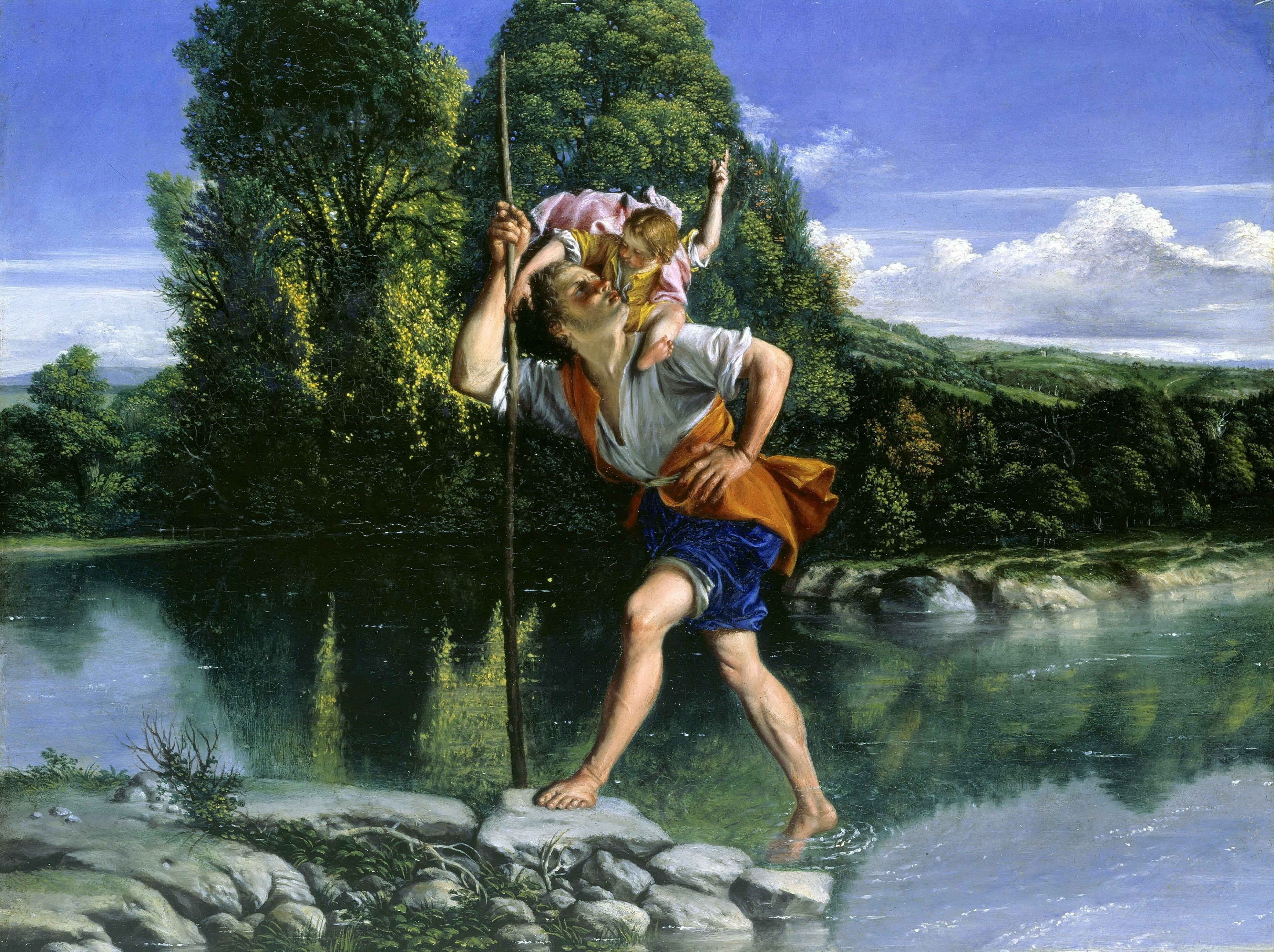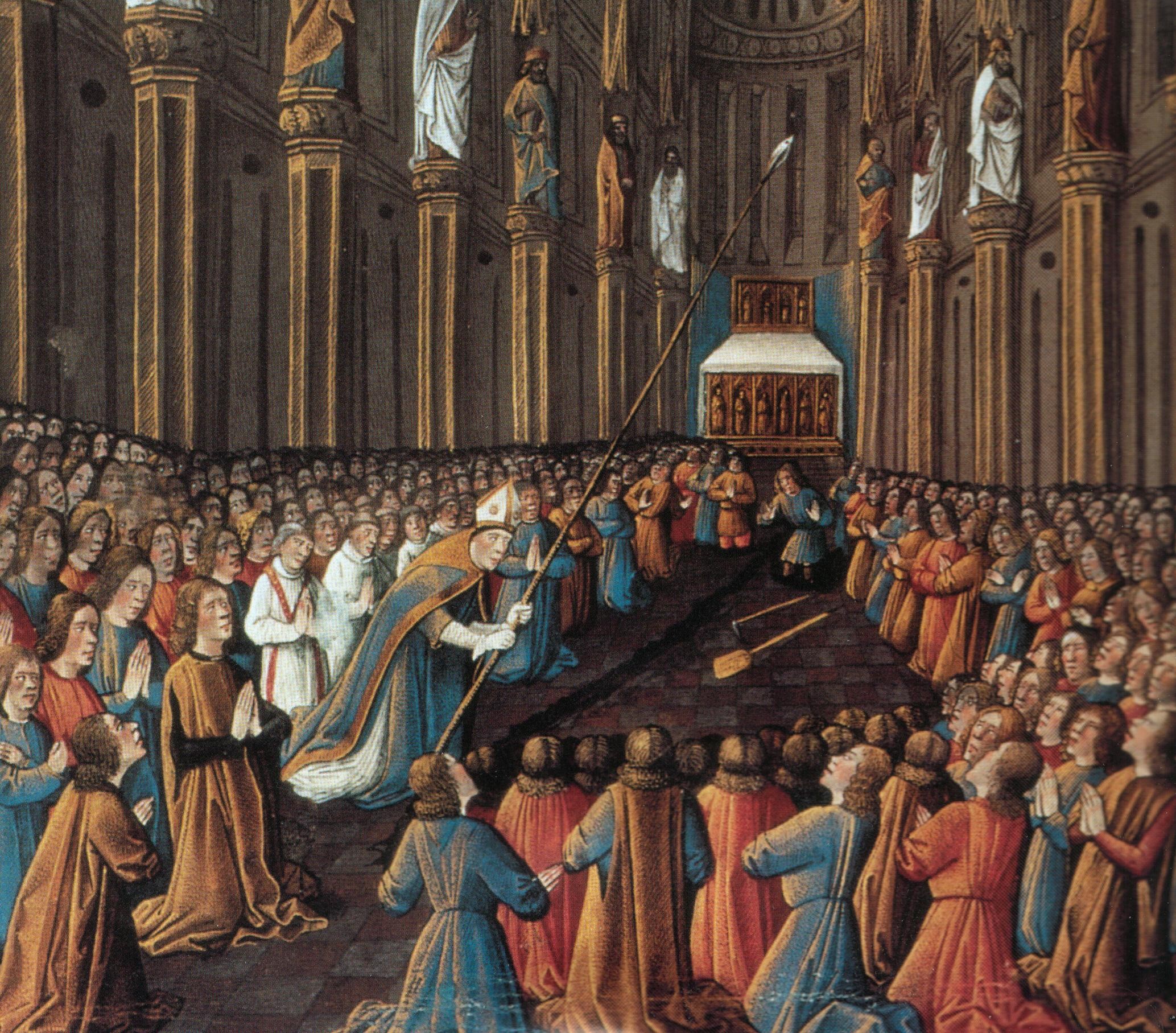|
Christopher Of Antioch
Christopher (Arabic: خريسطوفورس, ''Kharīsṭūfūrus'') was Chalcedonian Patriarch of Antioch from 960 to 967. Biography A native of Baghdad who was originally named ʻĪsá, he moved to Syria under the rule of Sayf al-Dawla, the Hamdanid emir of Aleppo, and took a job as secretary to a subordinate emir in Shaizar. He intervened in Church controversies in Antioch and its Christian residents selected him as the new patriarch upon the death of Agapius I. As patriarch, Christopher undertook educational and charitable efforts to help his Christian subjects, including negotiations with Sayf al-Dawla for tax reduction. When a rebellion broke out in Antioch in 965, led by Rashiq al-Nasimi, Christopher took the side of the emir and withdrew to the monastery of Simeon Stylites in order to avoid interaction with the rebels. After the rebellion was finally suppressed, this made the patriarch a favorite at the court of Sayf al-Dawla, but created enemies within Antioch. When ... [...More Info...] [...Related Items...] OR: [Wikipedia] [Google] [Baidu] [Amazon] |
Saint Christopher
Saint Christopher (, , ; ) is venerated by several Christian denominations. According to these traditions, he was a martyr killed in the reign of the 3rd-century Roman Empire, Roman emperor Decius (), or alternatively under the emperor Maximinus Daia (). Churches and monasteries were named after him by the 7th century. There is no evidence for the historicity of the saint.Britannica, The Editors of Encyclopaedia. "Saint Christopher" Encyclopedia Britannica, 25 July 2024, https://www.britannica.com/biography/Saint-Christopher. Accessed 25 October 2024. The most famous legend connected to the saint recounts that after converting to Christianity, he devoted his life to carrying travelers across a river. One day he carried an unknown young boy across a river after which the boy reve ... [...More Info...] [...Related Items...] OR: [Wikipedia] [Google] [Baidu] [Amazon] |
Jizya
Jizya (), or jizyah, is a type of taxation levied on non-Muslim subjects of a state governed by Sharia, Islamic law. The Quran and hadiths mention jizya without specifying its rate or amount,Sabet, Amr (2006), ''The American Journal of Islamic Social Sciences'' 24:4, Oxford; pp. 99–100. and the application of jizya varied in the course of Islamic history. However, scholars largely agree that early Muslim rulers adapted some of the existing systems of taxation and modified them according to Islamic religious law.online Historically, the jizya tax has been understood in Islam as a fee for protection provided by the Muslim ruler to non-Muslims, for the exemption from military service for non-Muslims, for the permission to practice a non-Muslim faith with some communal autonomy in a Muslim state, and as material proof of the non-Muslims' allegiance to the Muslim state and its laws. The majority of Muslim jurists required adult, free, sane men, males among the dhimma community to pay ... [...More Info...] [...Related Items...] OR: [Wikipedia] [Google] [Baidu] [Amazon] |
Saint
In Christianity, Christian belief, a saint is a person who is recognized as having an exceptional degree of sanctification in Christianity, holiness, imitation of God, likeness, or closeness to God in Christianity, God. However, the use of the term ''saint'' depends on the context and Christian denomination, denomination. In Anglican Communion, Anglican, Oriental Orthodox, and Lutheranism, Lutheran doctrine, all of their faithful deceased in Heaven are considered to be saints, but a selected few are considered worthy of greater honor or emulation. Official Ecclesiastical polity, ecclesiastical recognition, and veneration, is conferred on some denominational saints through the process of canonization in the Catholic Church or glorification in the Eastern Orthodox Church after their approval. In many Protestant denominations, and following from Pauline usage, ''saint'' refers broadly to any holy Christian, without special recognition or selection. While the English word ''saint'' ... [...More Info...] [...Related Items...] OR: [Wikipedia] [Google] [Baidu] [Amazon] |
Church Of Cassian
The Church of Cassian (), also called the Church of St. Peter (gr. ''Hagios Petros''), was the Cathedral church of Patriarch of Antioch during late antiquity and the Middle Ages. The church is not to be mistaken with the cave church called St. Peter. A version of the Holy Lance was found in the treasury of the cathedral in 1098, by the forces of the First Crusade. In 1190, the cathedral became the burial place of Frederick Barbarossa. In 1268, the cathedral was burned by Baybars during his sack of Antioch. History Origins According to the famous Christian Arab Ibn Butlan, the church was the house of a man called Cassianus, a prince of Antioch, whose son the apostle Peter had resurrected. It is possible that Cassianus refers to an actual governor. The Arab historian Al-Masudi dates the church to 459 though his source is unknown. The first mention of the church is in a homily preached by Severus, Patriarch of Antioch, on February 22 513. The Syrian chronicler John Malalas ... [...More Info...] [...Related Items...] OR: [Wikipedia] [Google] [Baidu] [Amazon] |
Relic
In religion, a relic is an object or article of religious significance from the past. It usually consists of the physical remains or personal effects of a saint or other person preserved for the purpose of veneration as a tangible memorial. Relics are an important aspect of some forms of Buddhism, Christianity, Islam, shamanism, and many other religions. ''Relic'' derives from the Latin ''reliquiae'', meaning "remains", and a form of the Latin verb ''relinquere'', to "leave behind, or abandon". A reliquary is a shrine that houses one or more religious relics. In classical antiquity In ancient Greece, a polis, city or Greek temple, sanctuary might claim to possess, without necessarily displaying, the remains of a venerated hero as a part of a Greek hero cult, hero cult. Other venerable objects associated with the hero were more likely to be on display in sanctuaries, such as spears, shields, or other weaponry; chariots, ships or Figurehead (object), figureheads; furniture such a ... [...More Info...] [...Related Items...] OR: [Wikipedia] [Google] [Baidu] [Amazon] |
Theodorus II Of Antioch
Theodoros or Theodorus () is a masculine given name, from which Theodore is derived. The feminine version is Theodora. It may refer to: Ancient world :''Ordered chronologically'' * Theodorus of Samos, 6th-century BC Greek sculptor, architect and inventor * Theodorus of Cyrene, 5th-century BC Libyan Greek mathematician * Theodorus of Byzantium, late 5th-century BC Greek sophist and orator * Theodorus the Atheist (c. 340–c. 250 BC), Libyan Greek philosopher * Theodorus of Athamania (), King of a tribe in Epirus * Theodorus (meridarch) (), civil governor of the Swat province of the Indo-Greek kingdom * Theodorus of Gadara, 1st-century BC Greek rhetorician * Theodorus of Asine (), Greek Neoplatonist philosopher * Theodorus of Tabennese (c. 314–368), Egyptian Christian monk * Theodorus (usurper) (), Roman usurper against Emperor Valens * Theodorus Priscianus, 4th-century physician at Constantinople * Theodorus I (bishop of Milan) (died 490) * Theodorus (consul 505) () ... [...More Info...] [...Related Items...] OR: [Wikipedia] [Google] [Baidu] [Amazon] |
Nikephoros II
Nikephoros II Phokas (; – 11 December 969), Latinized Nicephorus II Phocas, was Byzantine emperor from 963 to 969. His career, not uniformly successful in matters of statecraft or of war, nonetheless greatly contributed to the resurgence of the Byzantine Empire during the 10th century. In the east, Nikephoros completed the conquest of Cilicia and retook the islands of Crete and Cyprus, opening the path for subsequent Byzantine incursions reaching as far as Upper Mesopotamia and the Levant; these campaigns earned him the sobriquet "pale death of the Saracens". Early life and career Nikephoros Phokas was born around 912. From his paternal side, he belonged to the Phokas family which had produced several distinguished generals, including Nikephoros' father Bardas Phokas, brother Leo Phokas, and grandfather Nikephoros Phokas the Elder, who had all served as commanders of the field army ('' domestikos tōn scholōn''). From his maternal side he belonged to the Maleinoi, a po ... [...More Info...] [...Related Items...] OR: [Wikipedia] [Google] [Baidu] [Amazon] |
Martyr
A martyr (, ''mártys'', 'witness' Word stem, stem , ''martyr-'') is someone who suffers persecution and death for advocating, renouncing, or refusing to renounce or advocate, a religious belief or other cause as demanded by an external party. In colloquial usage, the term can also refer to any person who suffers a significant consequence in protest or support of a cause. In the martyrdom narrative of the remembering community, this refusal to comply with the presented demands results in the punishment or execution of an individual by an oppressor. Accordingly, the status of the 'martyr' can be considered a posthumous title as a reward for those who are considered worthy of the concept of martyrdom by the living, regardless of any attempts by the deceased to control how they will be remembered in advance. Insofar, the martyr is a relational figure of a society's boundary work that is produced by collective memory. Originally applied only to those who suffered for their religious b ... [...More Info...] [...Related Items...] OR: [Wikipedia] [Google] [Baidu] [Amazon] |
Orontes River
The Orontes (; from Ancient Greek , ) or Nahr al-ʿĀṣī, or simply Asi (, ; ) is a long river in Western Asia that begins in Lebanon, flowing northwards through Syria before entering the Mediterranean Sea near Samandağ in Hatay Province, Turkey. As the chief river of the northern Levant, the Orontes has been the site of many major battles including the Battle of Kadesh (13th century BCE), and water distribution remains a controversial issue between the countries in the region. Among the most important cities on the river are Homs, Hama, Jisr al-Shughur, and Antakya (the ancient Antioch, which was also known as "Antioch on the Orontes"). Names In the 9th century BCE, the ancient Assyrian people, Assyrians referred to the river as Arantu, and the nearby Egyptians called it Araunti. The etymology of the name is unknown, yet some sources indicate that it might be derived from ''Arnt'' which means "lioness" in Syriac languages; others called it ''Alimas'', a "water goddess" in Ara ... [...More Info...] [...Related Items...] OR: [Wikipedia] [Google] [Baidu] [Amazon] |
Greater Khorasan
KhorasanDabeersiaghi, Commentary on Safarnâma-e Nâsir Khusraw, 6th Ed. Tehran, Zavvâr: 1375 (Solar Hijri Calendar) 235–236 (; , ) is a historical eastern region in the Iranian Plateau in West Asia, West and Central Asia that encompasses western and northern Afghanistan, northeastern Iran, the eastern halves of Turkmenistan and Uzbekistan, western Tajikistan, and portions of Kyrgyzstan and Kazakhstan. The extent of the region referred to as ''Khorasan'' varied over time. In its stricter historical sense, it comprised the present territories of Khorasan Province, northeastern Iran, parts of Afghanistan and southern parts of Central Asia, extending as far as the Amu Darya (Oxus) river. However, the name has often been used in a loose sense to include a wider region that included most of Transoxiana (encompassing Bukhara and Samarqand in present-day Uzbekistan), extended westward to the Caspian Sea, Caspian coast and to the Dasht-e Kavir southward to Sistan, and eastward to t ... [...More Info...] [...Related Items...] OR: [Wikipedia] [Google] [Baidu] [Amazon] |
Byzantine Empire
The Byzantine Empire, also known as the Eastern Roman Empire, was the continuation of the Roman Empire centred on Constantinople during late antiquity and the Middle Ages. Having survived History of the Roman Empire, the events that caused the fall of the Western Roman Empire in the 5th centuryAD, it endured until the fall of Constantinople to the Ottoman Empire in 1453. The term 'Byzantine Empire' was coined only after its demise; its citizens used the term 'Roman Empire' and called themselves 'Romans'. During the early centuries of the Roman Empire, the western provinces were Romanization (cultural), Latinised, but the eastern parts kept their Hellenistic culture. Constantine the Great, Constantine I () legalised Christianity and moved the capital to Constantinople. Theodosius I, Theodosius I () made Christianity the state religion and Greek gradually replaced Latin for official use. The empire adopted a defensive strategy and, throughout its remaining history, expe ... [...More Info...] [...Related Items...] OR: [Wikipedia] [Google] [Baidu] [Amazon] |
Islam
Islam is an Abrahamic religions, Abrahamic monotheistic religion based on the Quran, and the teachings of Muhammad. Adherents of Islam are called Muslims, who are estimated to number Islam by country, 2 billion worldwide and are the world's Major religious groups, second-largest religious population after Christians. Muslims believe that Islam is the complete and universal version of a Fitra, primordial faith that was revealed many times through earlier Prophets and messengers in Islam, prophets and messengers, including Adam in Islam, Adam, Noah in Islam, Noah, Abraham in Islam, Abraham, Moses in Islam, Moses, and Jesus in Islam, Jesus. Muslims consider the Quran to be the verbatim word of God in Islam, God and the unaltered, final revelation. Alongside the Quran, Muslims also believe in previous Islamic holy books, revelations, such as the Torah in Islam, Tawrat (the Torah), the Zabur (Psalms), and the Gospel in Islam, Injil (Gospel). They believe that Muhammad in Islam ... [...More Info...] [...Related Items...] OR: [Wikipedia] [Google] [Baidu] [Amazon] |









